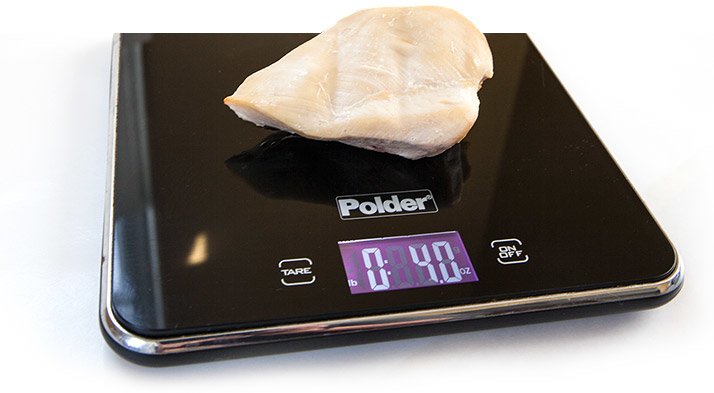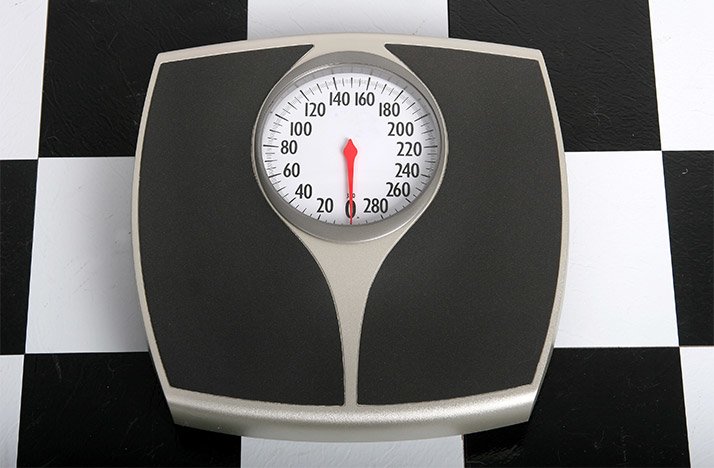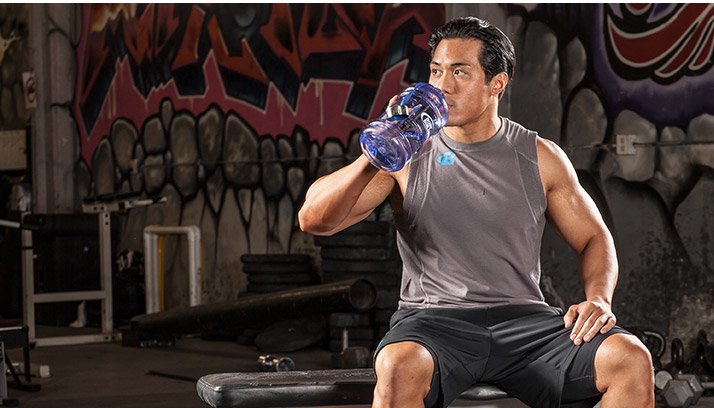
5 Essentials For Your Transformation Toolbox!
Stuck in a rut and not making progress in your fat-loss or weight-gain efforts? You may be overlooking these five powerful components of long-term success.
In the ever-evolving world of fitness and nutrition, it can be easy to look past the proven basics and fixate on the new, complicated, and shiny. There are a limitless number of variables you can manipulate in your search for the best plan. From macros and nutrient timing, to complex body part splits, to expensive and exotic supplement stacks, there's a never-ending list of possibilities to consider.
However, if the essentials aren't in place, a plateau will become your new home, no matter what new training styles or supplement concoctions you try. If you're about to embark on a journey to change your life, or you're in the doldrums and wondering why, make sure your transformation toolbox contains these five essentials!
A Food Scale
Portion control is essential to ensuring you're in an appropriate caloric surplus or deficit to achieve your goals. It's more important than your macronutrient breakdown or specific nutrient timing, even though it isn't nearly as hip.

Sure, estimating and eyeballing portions may get you so far—and I've written in the past about my fondness for the "palm" method—but if a drastic transformation is your goal, there's no substitute for the scale. It will give you a truly objective picture of portion size that you can't get any other way.
If you've stalled in your quest for monster size or are struggling to shred, it's almost certain that your portions are out of whack. For those of you who've been consistently trying to put on weight, eyeballing may cause you to shortchange yourself. On the other hand, if you're looking to shed a few pounds, eyeballing may result in eating far more food than you should. This is especially true if you're portioning in a hungry state.
Spend even just a few weeks with the scale, and both problems will be far easier to solve.
A Bathroom Scale
Body weight isn't the only way to gauge progress, of course, and you could make a compelling case it's not even the best one. But it's definitely the easiest way to attach a number to progress. If you swear you're making the appropriate changes to your nutrition plan, the scale will certainly provide an invaluable, objective opinion. But it requires that you use it regularly.
Why rely on the scale for guidance? Regular body-fat tests aren't feasible for most people (and even those require a scale to be truly accurate). The mirror has its place, but in the early days of a transformation doesn't give much help. And calorie calculators just estimate your calorie needs based on the information you type in.

These handy, simple-to-use tools provide an excellent starting place, but they're not individualized, and they may recommend taking in too much or too little than you actually need to meet your goals. Using the scale to guide your intake adjustments will confirm your nutrition and exercise plans are heading you in more or less the right direction.
It's simple: Weigh yourself 2-3 times a week, then average the week's numbers and compare from the previous week to guide your adjustments (if any). You don't have to step on every single day. Just make sure you're weighing yourself at the same time, each time, as your body weight can fluctuate anywhere from 2-4 pounds per day. Hydration status, along with the clothes you are wearing when you step on the scale, can also influence your day-to-day values.
A Water Bottle...And Some Water
The "and some water" part may seem obvious, but let's face it; we've all got empty water bottles lying around collecting dust. You need a full one with you at all times—and then you need to empty it. Into your mouth.
With all of the hoopla and energy given to the macronutrients, it's often forgotten that water is an essential nutrient, and particularly when you're training hard. The oft-cited "70 percent of you is water" stat applies to muscles as well as every other part of you. This is important because a hydrated muscle is a strong muscle—and a dehydrated one is weak.
Strength, power, and speed all decrease significantly when exercising in a dehydrated state, and that state is far easier to reach than you think. Not drinking enough throughout the day, coupled with the fact that sweat rates vary widely for different people and workout styles, is a prescription for sacrificing exercise performance.1-3

Arm yourself with the tools to maintain proper hydration throughout the day. That's as simple as carrying around a water bottle. You don't have to go the bro jug route, but bigger is better as it'll reduce the number of trips to the fountain.
Be sure to keep this bottle with you throughout the day, and yes, even at your desk, in meetings, and while you're driving. The more acquainted you get with the bottle, the more likely you are to put it to use.
An Online Community
When days run long and stress levels reach a new high, it gets easy to put the gym on the back burner. However, by joining an online fitness community—like our very own BodySpace, which is absolutely free—you'll have instant access to motivation, discussion of exercise technique, and instant sources of advice or support. Plus, you'll be able to track your progress—weights, measurements and pictures—all in one place, which is even more motivating!
Those who have been where you're trying to go report time and time again that consistency is the most important element of transformation. It's as important as the details of your macros or what particular workout you choose. Without some type of community and tracking tools, consistency is very, very hard to manage on your own.
A Few Essential Supplements
Make no mistake: Your transformation will be achieved with food and training above all else. So why supplement? First and foremost, supplementation will help make sure you're getting enough protein. It will also enhance the quality of your workouts and the speed of your recovery.
-
Whey protein. This versatile, easy-to-incorporate protein source is any fitness enthusiast's best friend. Whey protein is a rapidly digesting, high-quality protein that can bolster any meal or snack to ensure you're hitting the minimum amount necessary to maximize muscle building and recovery.
Creatine monohydrate. The most extensively studied supplement available, creatine monohydrate has been shown to enhance strength, power, and recovery, and even a growing number of nonfitness qualities like cognitive function, glucose metabolism and bone mineral density.4,5 Take 3-5 grams per day to reap multiple health and performance benefits. Regardless of your specific goals, the right creatine supplement can play a beneficial role.
Branched-chain amino acids. BCAA supplementation offers several beneficial muscle-building and recovery benefits backed by research, including increased rates of protein synthesis, decreased muscle-protein breakdown, and reduced muscle soreness.6-9
Give Yourself a Fighting Chance
These five essentials will help you to establish a consistent foundation of successful habits. However, it's also important that you choose the appropriate training plan. For example, a muscle-building diet doesn't pair well with a fat-loss workout plan!
Once you've got the fundamentals down, a positive attitude that embraces each and every minute of the journey will take you further than ever before. Make it your passion and part of who you are, so much so that you can live by the words, "I Lift, Ergo I Am."
References
- Casa, D.J., Armstrong, L.E., Hillman, S.K., Montain, S.J., Reiff, R.V., Rich, B.S.E., Roberts, W.O. & Stone, J.A., National Athletic Trainer's Association Position Statement: Fluid Replacement for Athletes. Journal for Athletic Training, 35(2), 212-224.
- Sawka, M.N., Burke, L.M., Eichner, E.R., Maughan, R.J., Montain, S.J. & Stachenfeld, N.S. (2007). ACSM Position Stand: Exercise and Fluid Replacement. Medicine and Science in Sports and Exercise, 39(2), 377-390.
- Casa, D.J. & Clarkson, P.M. (2005). American College of Sports Medicine Roundtable on Hydration and Physical Activity: Consensus Statements. Current Sports Medicine Reports, 4(3), 115-127.
- Chilibeck, P.D., Chrusch, M.J., Chad, K.E., Shawn Davison, K., & Burke, D.G. (2005). Creatine monohydrate and resistance training increase bone mineral content and density in older men. Journal of Nutrition Health and Aging, 9(5), 352-353.
- Gualano, B., de Salles Painneli, V., Roschel, H., Artioli, G. G., Junior, M. N., Lucia de Sa Pinto, A., ... & Lancha, A. H. J. (2011). Creatine in type 2 diabetes: a randomized, double-blind, placebo-controlled trial. Medicine and Science in Sports and Exercise, 43(5), 770-778.
- Shimomura, Y., Inaguma, A., Watanabe, S., Yamamoto, Y., Muramatsu, Y., Bajotto, G., ... & Mawatari, K. (2010). Branched-chain amino acid supplementation before squat exercise and delayed-onset muscle soreness. International Journal of Sport Nutrition, 20(3), 236.
- Coombes, J. S., & McNaughton, L. S. (2000). Effects of branched-chain amino acid supplementation on serum creatine kinase and lactate dehydrogenase after prolonged exercise. Journal of Sports Medicine and Physical Fitness, 40(3), 240.
- MacLean, D. A., Graham, T. E., & Saltin, B. (1994). Branched-chain amino acids augment ammonia metabolism while attenuating protein breakdown during exercise. American Journal of Physiology-Endocrinology And Metabolism, 267(6), E1010-E1022.
- Nosaka, K., Sacco, P., & Mawatari, K. (2006). Effects of amino acid supplementation on muscle soreness and damage. International Journal of Sport Nutrition and Exercise Metabolism, 16(6), 620.

